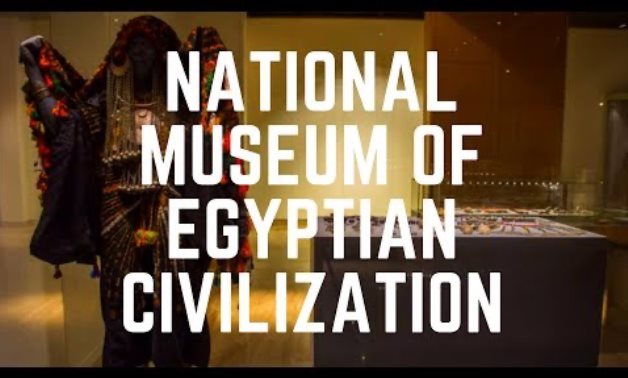
National Museum of Egyptian Civilization in Fustat - YouTube
CAIRO - 9 November 2020: The National Museum of Egyptian Civilization is one of the most important national projects adopted by the state.
It is one of the largest international museums as well as the only museum of its kind in Egypt, the Arab world, the Middle East and Africa.
It includes all the manifestations of the richness and diversity enjoyed by the Egyptian civilization during various eras, starting from prehistoric times until the present time, and it will contain among its flanks very rare monuments.
It is expected to open after the royal mummies are transferred from the Egyptian Museum in Tahrir to their permanent display in the National Museum of Egyptian Civilization.
The museum will consist of ten halls as follows:
Temporary Exhibition Hall (Egyptian Crafts Through The Ages):
This exhibition hall was opened in February 2017 in the presence of Irina Bokova, Director-General of UNESCO. It is on an area of 1000 square meters.
Central Exhibition Hall:
It includes the main display of the museum, and the visitor can get an integrated idea of the Egyptian civilization and its most important achievements throughout its different eras, starting from prehistoric times through the Pharaonic, Greco-Roman, Coptic and Islamic eras, and up to the modern and contemporary ages.
Hall of Mummies Display:
What is unique to the National Museum of Egyptian Civilization is the hall that was specially designed to display the mummies of the kings and queens of Pharaonic Egypt, which provide the visitor with the atmosphere of the Valley of the Kings, where these mummies were found.
Capital Museum (Glass Pyramid):
It displays the history of the current capital -present-day Greater Cairo- and is located in the glass pyramid that rises above the central display area.
Exhibition Hall (Dawn of Civilization):
Through it, the visitor can get acquainted with the early beginnings of the features of the Egyptian civilization in its early ages, how the Egyptians knew stability, agriculture and pastoralism, how villages and cities arose, regions unified, and how religion and beliefs arose until the beginning of the formation of the features of the Egyptian state.
Exhibition Hall (The Nile):
This hall analyzes and presents the story of the emergence of the Nile River in Egypt and how it represented the backbone of the Egyptian civilization and provided it with the blessing of stability and continuity and transformed the Egyptian man from a collector of food to a producer through knowledge of agriculture and fishing.
Exhibition Hall (Writing & Science):
This hall illustrates how the Egyptians reached writing through exhibiting the latest archaeological discoveries from Abydos and other areas, which confirm the leadership of Egyptians that preceded other nations in reaching writing, in addition to their morals and respect for the noble human values.
Exhibition Hall (Physical Culture):
It displays the physical evidence indicating the greatness of the Egyptian civilization, such as architecture and its development from prehistoric times to the modern era, with its various civil, religious, funeral and war branches.
Exhibition Hall (State & Society):
This hall presents the emergence of the Egyptian state and the relationship between the government and society, which is based on justice, equality, the vital role of women in society, and the system of institutions such as the judiciary, the army, the police, and the tax systems.
Exhibition Hall (Thought & Beliefs):
This hall portrays to the visitors the beliefs and religions of the ancient Egyptians through the ages and how they knew the power of God. They did not worship statues or individuals and were the closest to the Abraham religions in their interpretation of the emergence of the universe and what religions called for in terms of virtues.
For Booking and Details:-
Travel Tips:-
Tours & activities:-
Accommodations:-


0 Comments